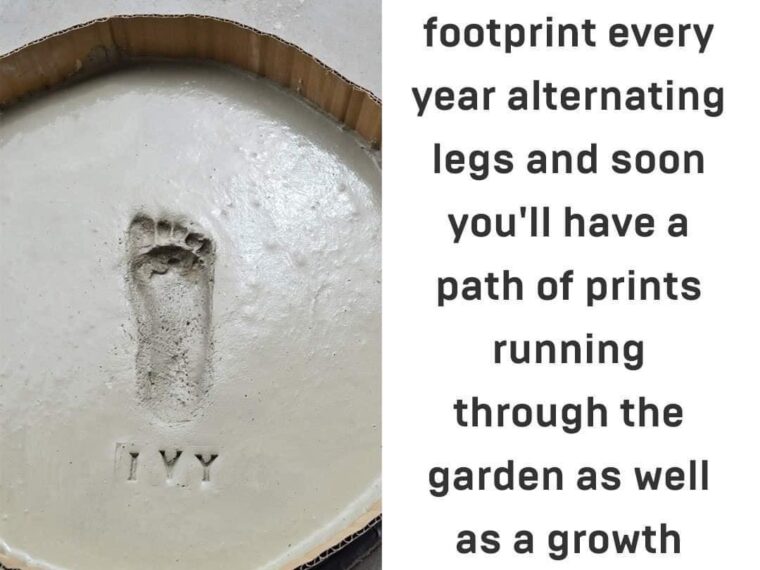The Brinks family’s journey into tiny home living isn’t just a story about downsizing or affordable housing — it’s a lifestyle choice deeply intertwined with sustainability and reducing their environmental footprint. Their intentional way of living, with less waste, fewer utilities, and greater reliance on nature, offers lessons and ideas anyone can adopt.
Whether you’re inspired by tiny houses or just looking for ways to shrink your carbon footprint and live more simply, here are a dozen creative footprint-reducing ideas inspired by the Brinks family’s lifestyle and other eco-conscious practices.
1. Downsize Your Living Space — Small is Sustainable
One of the biggest impacts on your ecological footprint is your home size. Heating, cooling, lighting, and furnishing a large house consumes more energy and materials. The Brinks family’s six tiny homes, each under 300 square feet, use far fewer resources than a typical suburban home.
If moving into a tiny home isn’t feasible, consider decluttering and optimizing your existing space. Sharing rooms, using multi-functional furniture, or even converting unused rooms into minimalistic retreats can reduce your household’s energy use.
Try it: Challenge yourself to live comfortably in 50% less space by organizing, donating unneeded items, and focusing on quality, not quantity.
2. Utilize Renewable Energy
The Brinks family keeps utility costs low through energy efficiency, but many tiny homeowners also turn to solar panels or small wind turbines to generate their own power. Renewable energy cuts dependence on fossil fuels and can save money over time.
If solar panels aren’t an option, consider solar-powered outdoor lighting, solar water heaters, or small portable solar chargers. Even switching to green energy plans through your utility provider helps reduce your carbon footprint.
Try it: Start with a solar charger for phones and small devices, and research grants or incentives for home solar installations in your area.
3. Harvest Rainwater
Water is a precious resource, especially in drought-prone regions. The Brinks family’s rural setting suggests potential for rainwater harvesting, a practice many tiny house communities embrace.
Collecting rainwater for irrigation, washing, or even indoor use (with proper filtration) reduces strain on municipal supplies and lowers your water bill. Installing rain barrels or cisterns is relatively low-cost and easy to maintain.
Try it: Set up a rain barrel under a downspout to collect water for garden use, reducing reliance on treated tap water.
4. Practice Composting
Food waste and organic materials contribute significantly to landfill methane emissions. Composting turns food scraps and yard waste into rich soil, closing the nutrient loop and cutting methane.
The Brinks family likely practices some form of composting on their farm property, using scraps to nourish their garden or animal feed.
Try it: Start a backyard compost bin or try vermicomposting (worm composting) indoors. Even small apartments can compost with the right setup.
5. Grow Your Own Food
Raising chickens, keeping a goat, and tending gardens are excellent ways the Brinks family reduces their environmental impact and food costs. Growing food locally cuts transportation emissions, packaging waste, and pesticide exposure.
Even if you don’t have acres of land, container gardening, vertical gardens, and windowsill herbs can provide fresh produce year-round.
Try it: Start a small herb garden indoors or plant a few vegetables in containers on your balcony or porch.
6. Adopt Minimalist, Multipurpose Living
Living tiny forces creative use of space and possessions. The Brinks family likely uses furniture that folds, nests, or serves multiple functions, reducing the need for excess items.
This principle can be applied anywhere: buying fewer but higher-quality items, avoiding single-use products, and rethinking how you use your belongings.
Try it: Before buying something new, ask if it will serve multiple purposes or replace other items you already own.
7. Reduce, Reuse, Recycle — And Refuse
The Brinks family mantra of “refuse, reduce, reuse, recycle” reminds us that the best waste is the waste never created.
- Refuse unnecessary packaging and single-use plastics.
- Reduce consumption by buying only what you need.
- Reuse containers, bags, and clothes.
- Recycle properly to keep materials out of landfill.
Community swap events, repair cafes, and secondhand shopping support reuse culture.
Try it: Carry your own reusable bags, water bottles, and utensils to avoid disposable waste.
8. Embrace Off-Grid and Low-Tech Solutions
Living off-grid or semi-off-grid isn’t just for tiny homes in the country. The Brinks family’s village incorporates off-grid elements by minimizing utility dependence.
Low-tech solutions like clotheslines instead of dryers, wood stoves for heating, or gas-powered camp stoves reduce energy use and connect you more closely with natural rhythms.
Try it: Hang clothes outside to dry, cook with propane or wood-burning stoves when possible, and unplug electronics when not in use.
9. Prioritize Local and Sustainable Materials
When building their tiny homes, the Brinks family likely sourced materials mindful of cost, sustainability, and durability.
Choosing locally harvested wood, reclaimed building materials, or eco-friendly finishes helps reduce embodied carbon—the emissions embedded in producing building products.
Try it: When renovating or furnishing your home, seek out reclaimed wood, natural fibers, and non-toxic paints or stains.
10. Reduce Transportation Footprint
The Brinks family’s rural location means they likely rely on cars for many errands, but they may also have cut back on trips by consolidating errands or telecommuting.
Reducing your transportation footprint is a key way to shrink your carbon emissions—options include biking, public transit, carpooling, and electric vehicles.
Try it: Challenge yourself to have a “car-free” day each week or bike for short trips instead of driving.
11. Foster Community and Shared Resources
One of the most powerful aspects of the Brinks tiny house village is how it blends private living with community. Shared spaces like the pool house and communal gardens maximize resources and build social bonds.
Communities can share tools, appliances, vehicles, or even meals, reducing overall consumption and waste.
Try it: Organize a neighborhood tool library, potluck dinners, or shared garden spaces to foster connection and cut waste.
12. Educate and Inspire Others
The Brinks family story, featured by Insider and other outlets, serves as an inspiration for sustainable living. Sharing knowledge, hosting tours, or simply talking openly about your efforts encourages others to think differently about home and footprint.
Environmental change is often sparked by storytelling and example, making your voice and actions valuable.
Try it: Start a blog, social media account, or local workshop about sustainability topics important to you.
Bonus Tips for Sustainable Tiny Living
- Smart Water Fixtures: Install low-flow faucets, showerheads, and toilets to conserve water.
- Energy-Efficient Appliances: Use Energy Star-rated appliances designed for small spaces.
- Natural Ventilation: Design your home for cross-ventilation to reduce air conditioning needs.
- Solar Water Heating: Supplement electric or gas water heaters with solar panels.
- Eco-Friendly Insulation: Choose natural insulation materials like sheep’s wool, cork, or cellulose.
- Upcycled Decor: Personalize your tiny home with upcycled or handmade decorations to avoid mass-produced waste.
- Zero-Waste Lifestyle: Adopt practices like bulk shopping, DIY cleaning products, and avoiding disposable packaging.
- Seasonal Eating: Align your diet with local, seasonal produce to reduce food miles and support local farmers.
Conclusion: Living Lightly, Living Fully
The Brinks family tiny house village demonstrates that reducing your environmental footprint doesn’t have to mean sacrifice — it can mean innovation, joy, and freedom. Their intentional choices around home size, energy, waste, and community create a sustainable way of life that many aspire to.
Whether you want to downsize drastically or simply tweak your current lifestyle, these footprint ideas offer a roadmap toward more mindful, eco-friendly living. By borrowing from tiny house principles — simplicity, sustainability, and connection — anyone can contribute to a healthier planet while improving their own quality of life.
So take a page from the Brinks family: build small, live well, tread lightly, and cherish every moment in the home you create — however big or tiny it may be.





